Northern Lights tours in the Arctic – experience this gorgeous phenomenon
The Northern Lights, with their different hues and shapes, are truly awe-inspiring, especially when they dance across the sky. If you are dreaming about seeing this beautiful phenomenon, the best way is to join a Northern Lights tour. Chasing the Northern Lights is our strength, with our experience spanning more than 17 years and 8,500 tours.
Let the chase begin!
What Northern Lights tours do you have?
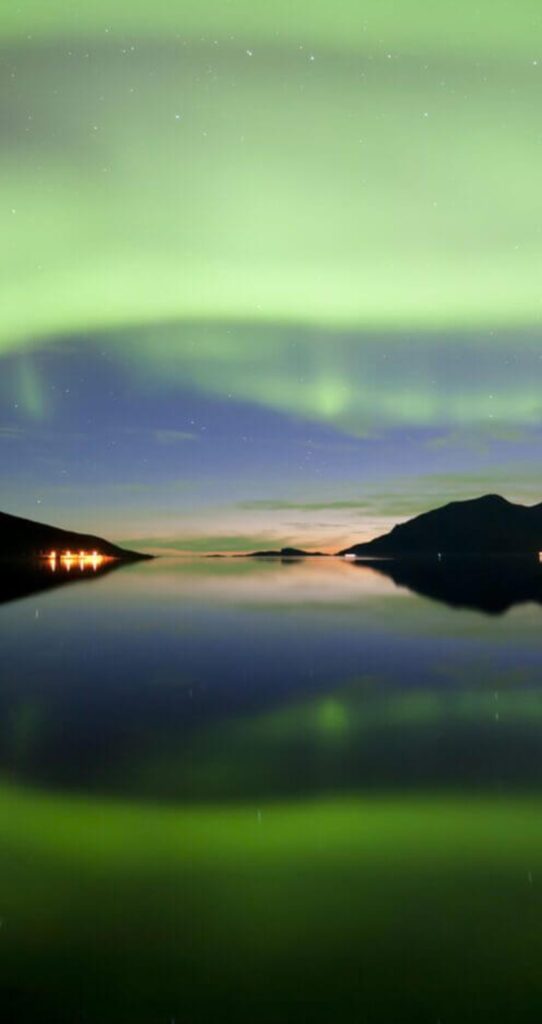
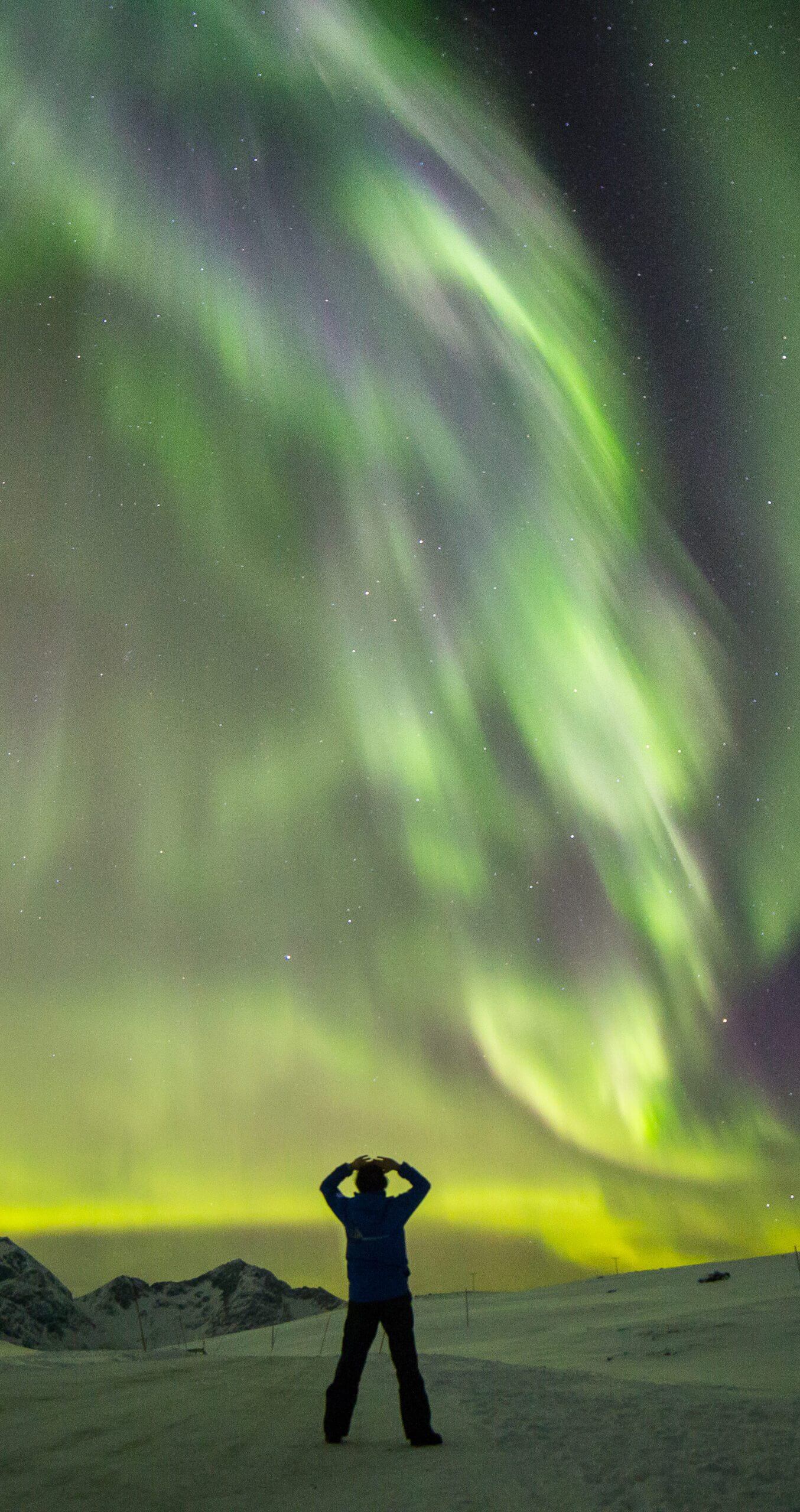
Let the chase begin!
What Northern Lights tours do you have?
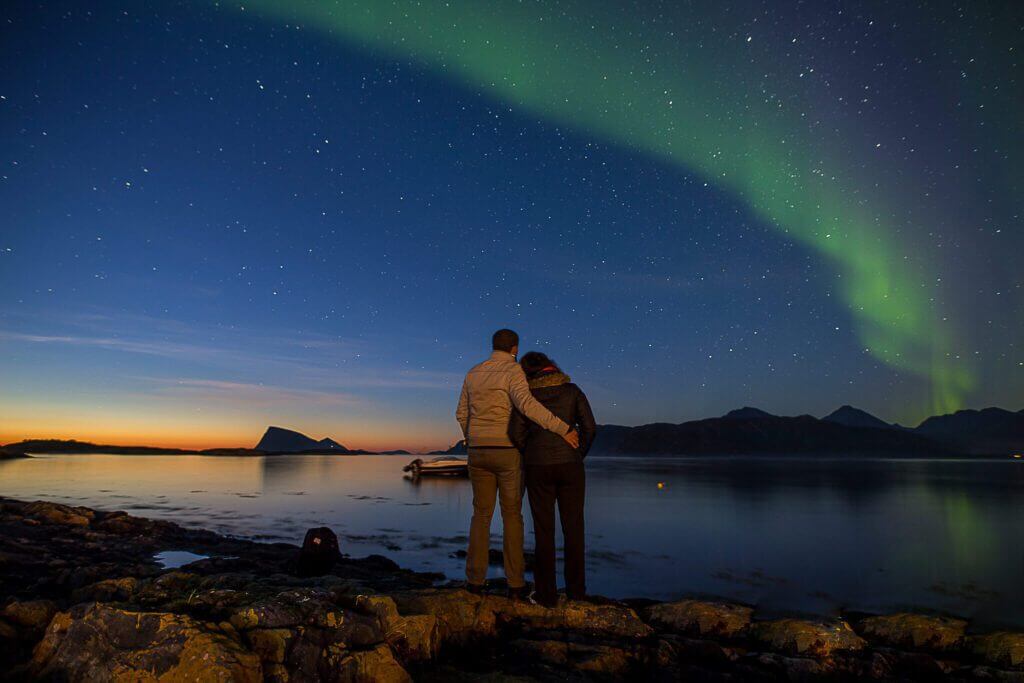

Other tours in Tromsø:

Private Northern Light tour
If you prefer to go on a private northern light chase with your friends, family or group, it’s also possible!
Get in touch with us and you will have your own car, mini-bus or big bus and a guide just for you!
You will be able to choose what time you want the tour to start and where you want to be picked-up.
Northern Lights by Boat
If you would like to try your luck chasing the northern lights by boat, we recommend you our Aurora Dinner Cruise, onboard a silent big comfortable catamaran, or our Northern Lights Sailing, also on a catamaran, sailing through the peaceful surroundings of Tromsø.
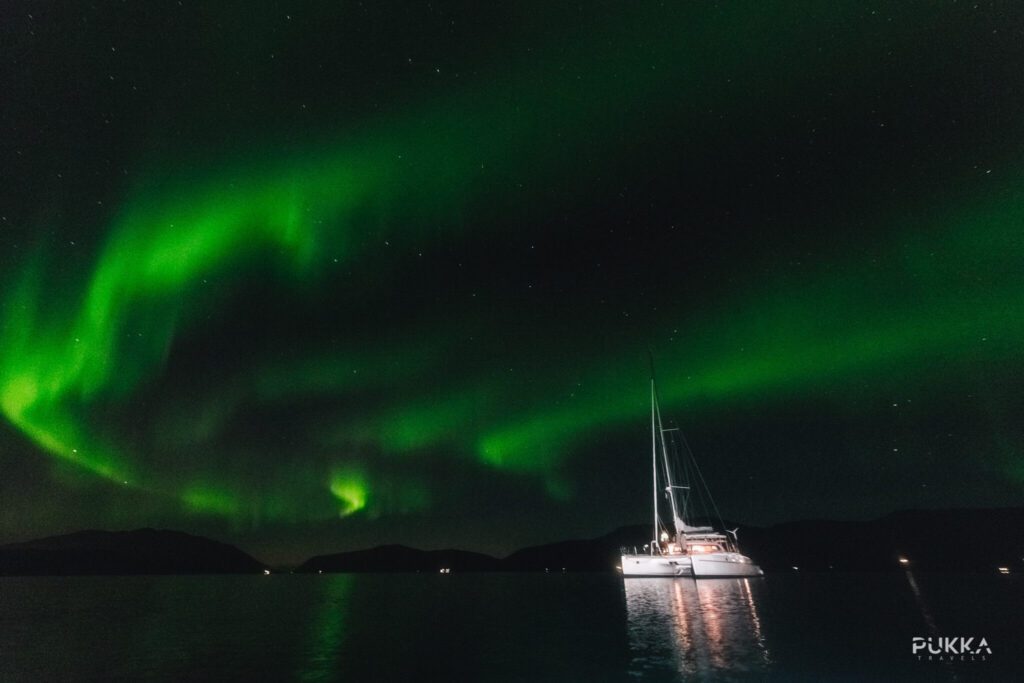
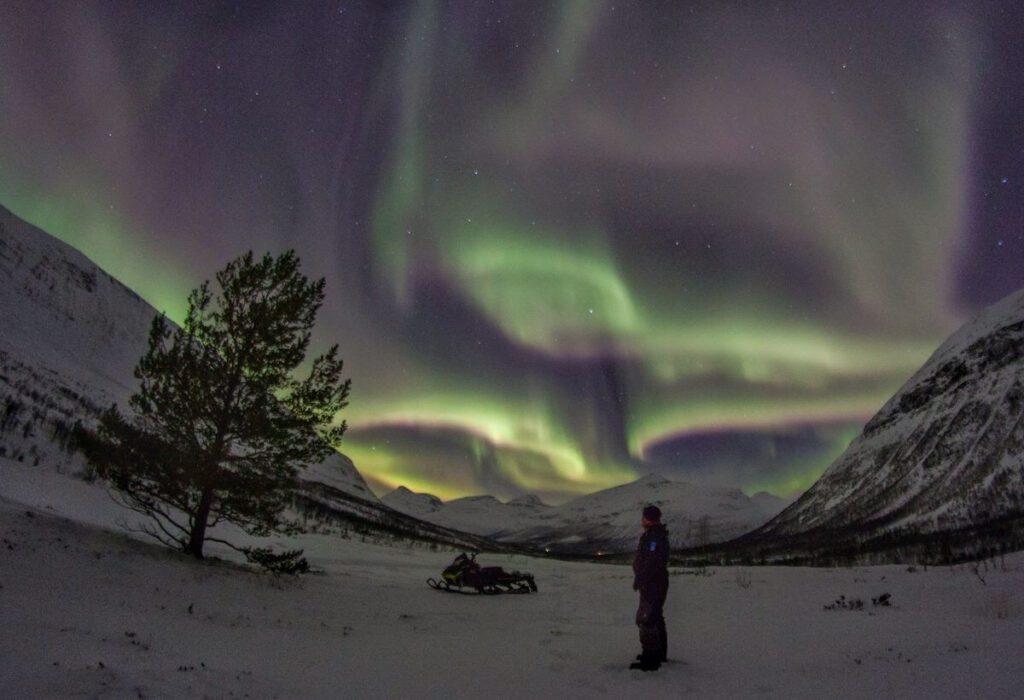
Snowmobile and Northern Lights
How does it sound a snowmobile tour in the evening, with the chance to spot the northern lights along the way?
Try our Snowmobile Excursion, with a small group and be delighted with what the Arctic night has to offer you!
Overnight on a Gamme tent with northern lights
A new experience awaits you! Stay in an authentic Sami tent, next to reindeer with dinner and breakfast included: Try our Overnight in Lavvo, reindeer sledding and feeding.
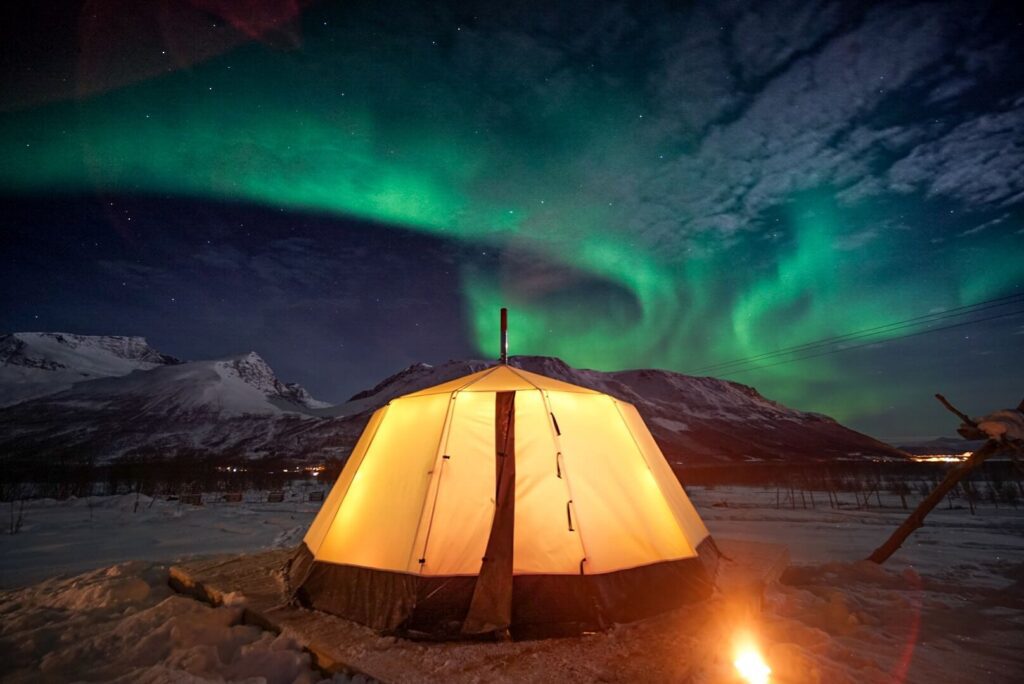
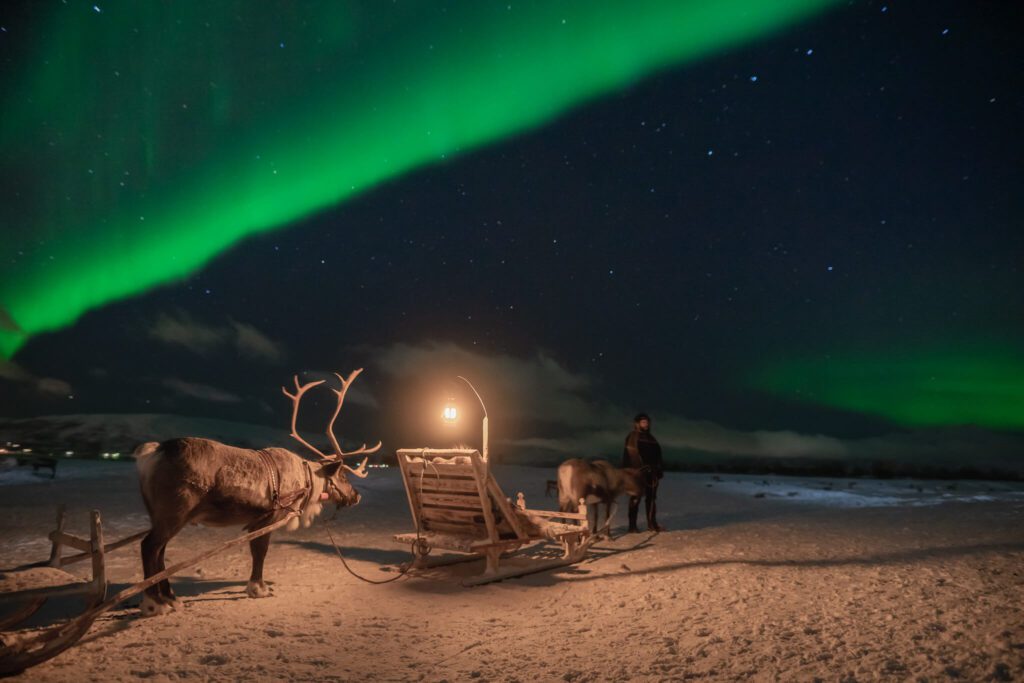
Northern Lights and reindeer with Sami culture
Are you looking for getting to know the Sami culture and their reindeer in the evening, and hopefully see the northern lights as well? You can feed them with our Reindeer Feeding and Northern Lights, go on a reindeer sledge activity with our Reindeer Sledding and Northern Lights.
If you would like to have dinner included, this is also possible, where you will try a real Sami meal with our Sami Reindeer Camp Dinner. If you wish, you can also have dinner and go on a reindeer sledge tour as well at the camp with our Sami Reindeer Camp Dinner & Sledding.
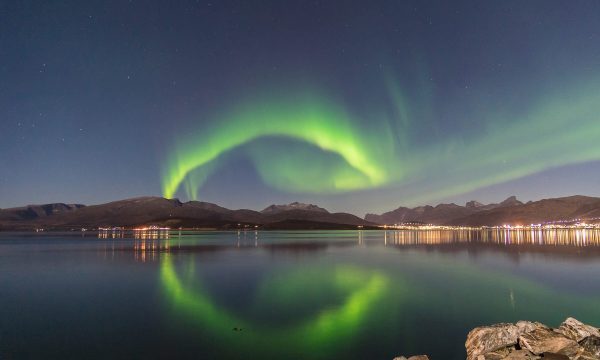
What are the Northern Lights?
The Northern Lights or Aurora Borealis are a natural phenomenon occurring in the Northern Hemisphere.
When conditions are right, they appear in the night sky displaying dynamic patterns (curtains, shafts, or spirals) of colored lights (mostly green but also red, purple, or more rarely blue).

What are the Northern Lights?
The Northern Lights or Aurora Borealis are a natural phenomenon occurring in the Northern Hemisphere.
When conditions are reunited, they appear in the night sky displaying dynamic patterns (curtains, shafts, or spirals) of colored lights (mostly green but also red, purple, or more rarely blue).
Charged particles from the sun, released during solar eruptions, are dragged into the atmosphere and steered towards the poles by the Earth’s magnetic field.
These particles then collide with gases present in the Earth’s upper atmosphere. This collision releases flashes of coloured light that we see as the Northern Lights.
The different colours depend on the gas particles involved at different altitudes: low-lying oxygen causes the most common green colour; red is produced by oxygen higher in the atmosphere whereas blue and purple hues come from nitrogen.
What causes the Northern Lights?
What causes the Northern Lights?
Charged particles from the sun, released during solar eruptions, are dragged into the atmosphere and steered towards the poles by the Earth’s magnetic field.
These particles then collide with gases present in the Earth’s upper atmosphere. This collision releases flashes of coloured light that we see as the Northern Lights.
The different colours depend on the gas particles involved at different altitudes: low-lying oxygen causes the most common green colour; red is produced by oxygen higher in the atmosphere whereas blue and purple hues come from nitrogen.
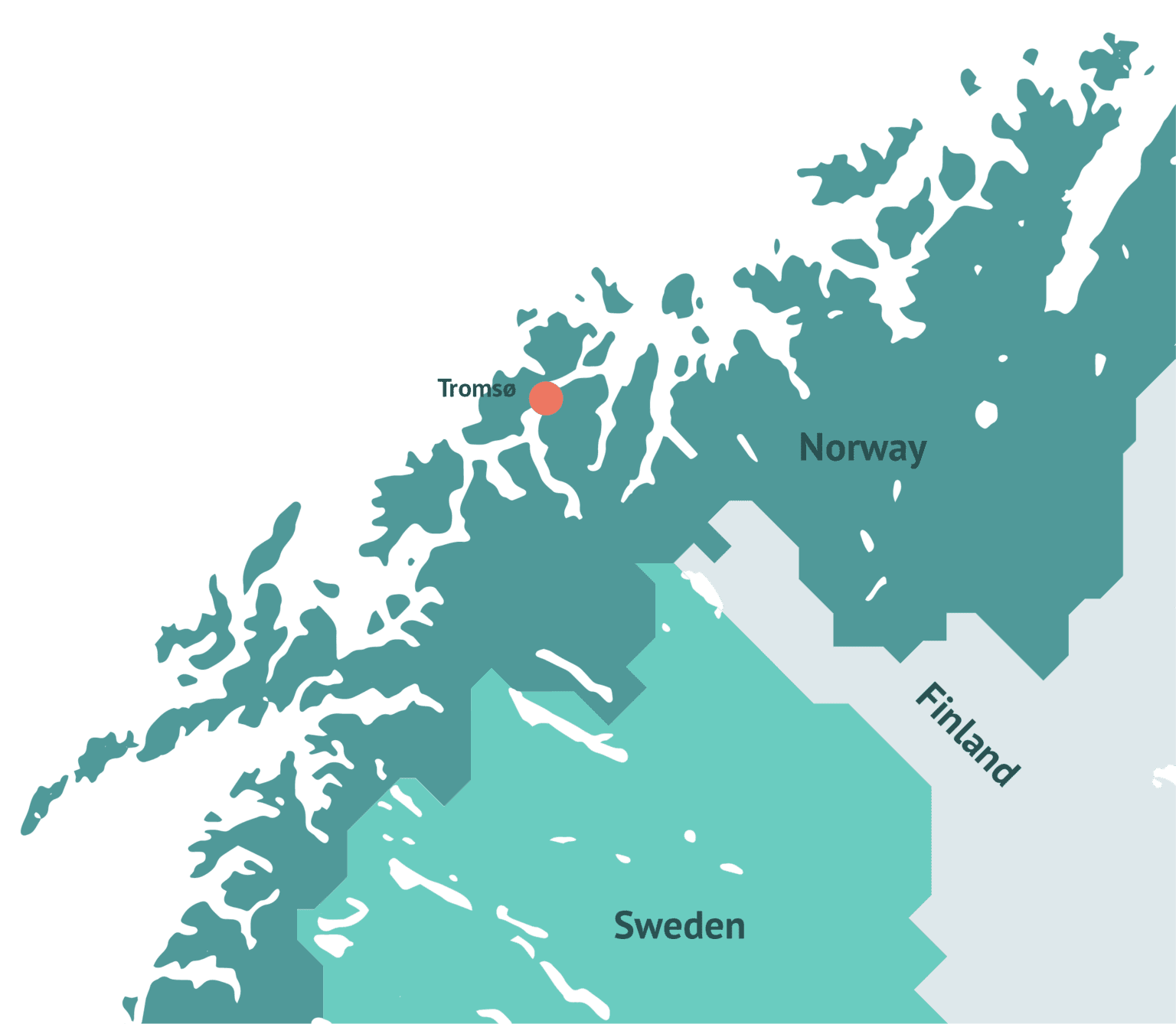
Why is Tromsø one of the best places to see the Northern Lights?
Tromsø is one of the best places in the world to see the Northern Lights because the city is located inside the aurora oval, a doughnut-shaped ring above the Earth’s Geomagnetic North Pole, which extends from Alaska to Russia via Canada, Iceland, Norway, Sweden and Finland.
The advantage when coming to Tromsø to see the Northern Lights is that the temperatures in winter are not that cold: an average of 0°C to -5°C in the city thanks to the Gulf Stream!
There is also a variety of accommodations and attractions to make your stay even more comfortable and fun!

Why is Tromsø one of the best places to see the Northern Lights?
Tromsø is one of the best places in the world to see the Northern Lights because the city is located inside the aurora oval, a doughnut-shaped ring above the Earth’s Geomagnetic North Pole, which extends from Alaska to Russia via Canada, Iceland, Norway, Sweden and Finland.
The advantage when coming to Tromsø to see the Northern Lights is that the temperatures in winter are not that cold: an average of 0°C to -5°C in the city thanks to the Gulf Stream!
There is also a variety of accommodations and attractions to make your stay even more comfortable and fun!
When can you see the Northern Lights in Tromsø, Norway?
You can see the aurora borealis in Tromsø (as well as Narvik and other places in Northern Norway) from September to early April, when the sky is dark enough, usually from 6pm to 1am – with a peak between 10 and 11pm.
Generally speaking, the best time to see the Northern Lights are around the equinoxes – March/April and September/October – as the level of aurora activity is higher.
However, the Northern Lights are a natural phenomenon, just like the weather, so we can’t know for sure when and where they will occur.
Their appearance and intensity are very much dependent on the sun’s activity.
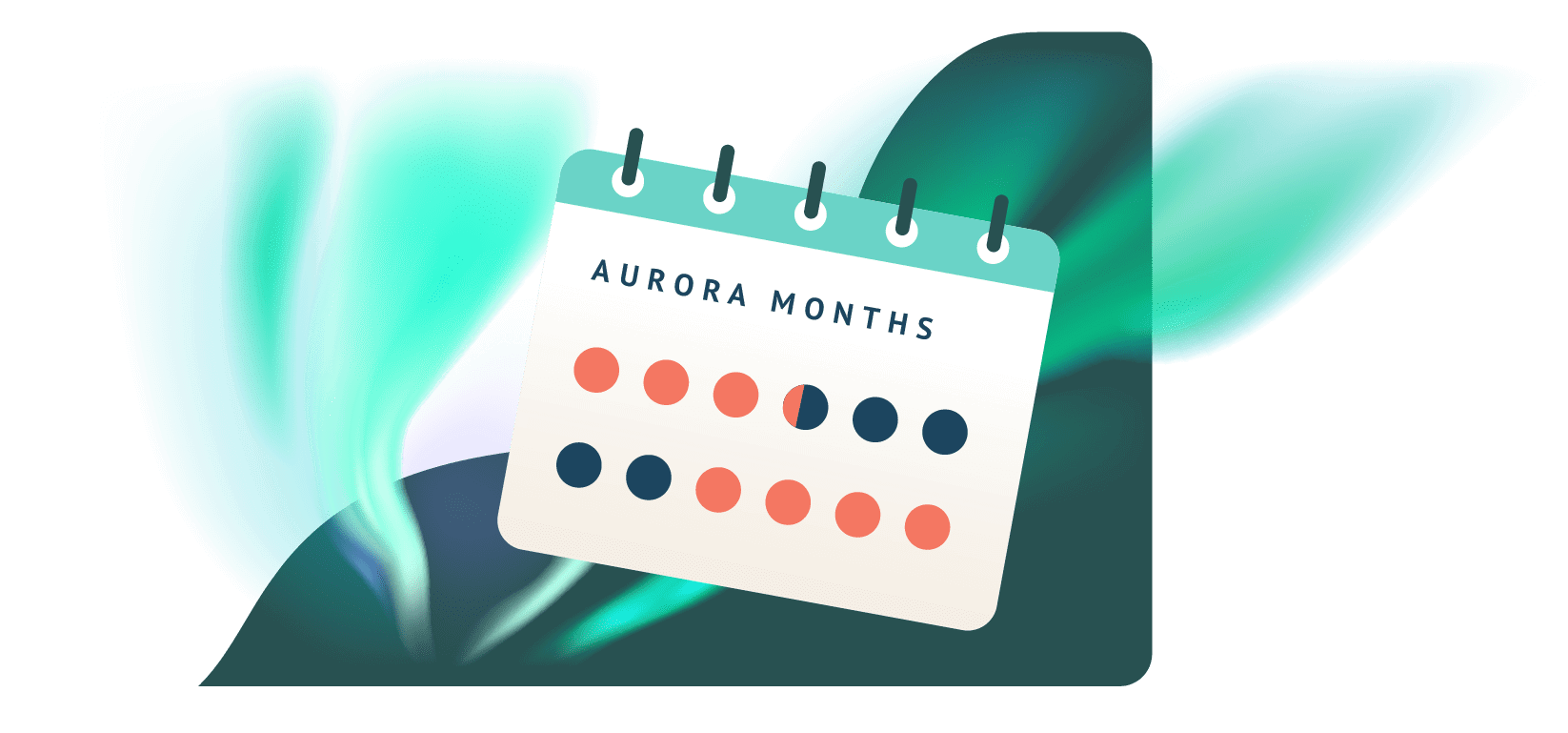

When can you see the Northern Lights in Tromsø, Norway?
You can see the aurora borealis in Tromsø (as well as Narvik and other places in Northern Norway) from September to early April, when the sky is dark enough, usually from 6pm to 1am – with a peak between 10 and 11pm.
Generally speaking, the best time to see the Northern Lights are around the equinoxes – March/April and September/October – as the level of aurora activity is higher.
However, the Northern Lights are a natural phenomenon, just like the weather, so we can’t know for sure when and where they will occur.
Their appearance and intensity are very much dependent on the sun’s activity.
How to see the Northern Lights?
It’s important to consider the following elements if you wish to see the Northern Lights:
- Go outside of the city to avoid any light pollution
- Choose a night when the sky is as clear as possible
- Wear warm clothes as it can get cold at night!
- Patience!
- Go on a Northern Lights excursion to maximize your chances. A professional guide will use their local knowledge and ability to read the weather and aurora forecast to find the best areas to see the Northern Lights on a specific night.
The Northern Lights have fascinated people throughout history and continue to do so. We have developed and produced a series of quality aurora activities for you.
Today, the aurora borealis draws people from all over the world to the Arctic for chases in the hope of seeing this natural phenomenon and taking home a Northern Lights photo.
The Northern Lights have fascinated people throughout history and continue to do so. We have developed and produced a series of quality aurora activities for you.
Today, the aurora borealis draws people from all over the world to the Arctic for chases in the hope of seeing this natural phenomenon and taking home a Northern Lights photo.
